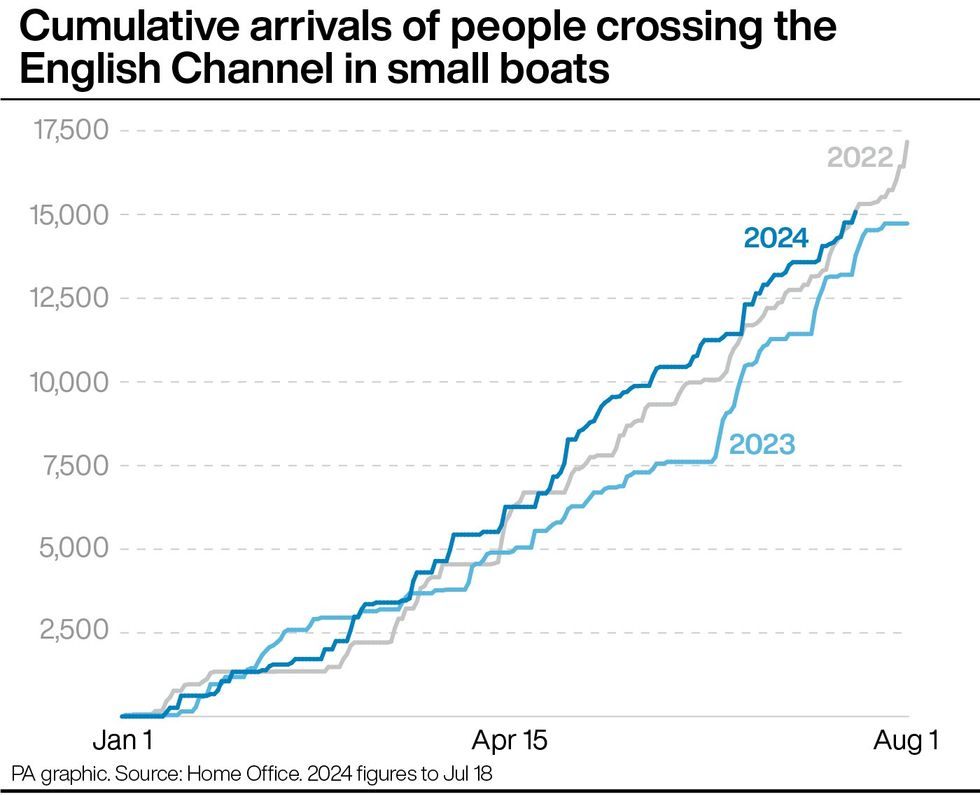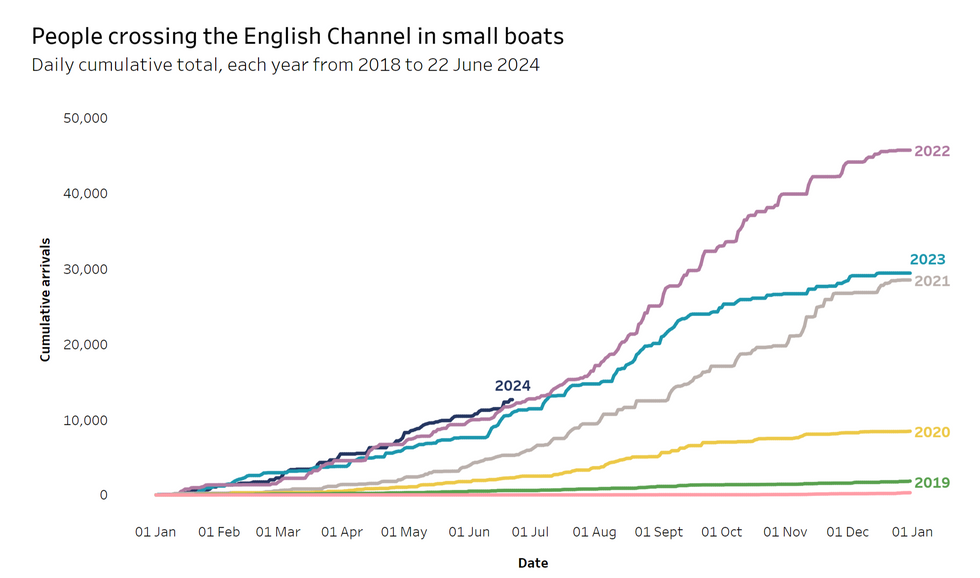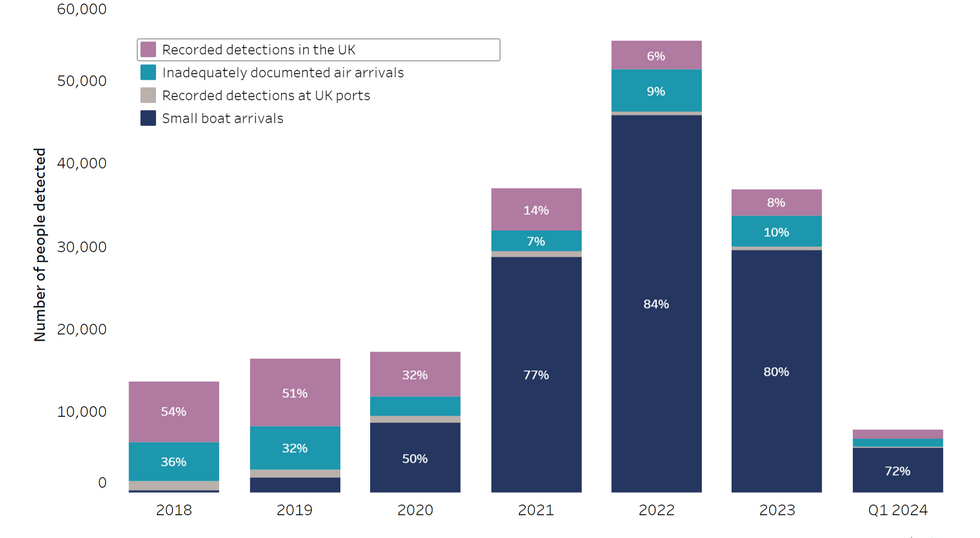Labour just branded illegal migration 'irregular' - these three charts show migration certainly isn't irregular
The number of migrants entering the UK illegally has significantly risen since 2018
Home Office figures show some 1,499 people crossed the English Channel in 27 boats from July 15 to 21
Don't Miss
Most Read
Trending on GB News
The Home Office released a statement on social media saying it is taking control of "irregular migration" as part of a strategy to boost border security and deliver a properly managed asylum system.
The announcement has sparked a debate with many arguing that it downplays the seriousness of illegal migration and that the term "irregular" fails to address public concern about illegal entry into the country.
Responding to the post on X, Nigel Farage said: "Labour wants to bury illegal immigration as a subject and they are now using the word ‘irregular’.
"We will not let them get away with it."
Labour wants to bury illegal immigration as a subject and they are now using the word ‘irregular’.
— Nigel Farage MP (@Nigel_Farage) July 24, 2024
We will not let them get away with it. https://t.co/9jE40PstUv
Although immigration is a natural part of the economy and society in many countries, the UK is experiencing much too high levels of immigration as outlined in the graphs below.
Figures released on July 19 show the provisional total of migrants arriving via the English Channel in 2024 so far has reached 15,076.
This is 9 per cent higher than the number recorded this time last year (13,774) and 0.2 per cent down on the same period in 2022 (15,106), according to PA.
Home Office figures show some 1,499 people made the journey in 27 boats from July 15 to 21.
It comes as one person died and 71 others were rescued in an incident off the coast of Northern France last Wednesday and taken to Calais.
Additionally, four migrants died in the English Channel on July 12, prompting Keir Starmer to say it was a "chilling reminder of the human cost" of people smuggling.

This graph shows 15,076 migrants have crossed the English Channel in small boats so far this year
PA
The number of small boat arrivals has increased dramatically since 2018, although there was a slight decrease in arrivals in 2023 compared to 2022.
According to the Home Office, 9,437 people reached the UK in 2023 after crossing the English Channel in small boats down from 45,774 in 2022.
However, as shown in the graph below, there has been a continual increase in arrivals from 2018 onwards.
While some reports of people crossing the English Channel go back fifty years, it was not until late 2018 that significant numbers were detected.
In 2018, there were only 299 cumulative arrivals, increasing to 1,843 in 2019 and 8,462 in 2020.
Between 2020 and 2021 there was a sharp increase rising to 28,526 in one year.

This graph shows the rise of people crossing the English Channel from 2018 to July 2024
The Migration Observatory
Although small boat crossings have been the predominant method of entering the UK since 2020, migrants have also been entering the country with alternative routes such as by air, ferry or lorry.
The proportion of small boat arrivals went from 2 per cent in 2018 to 80 per cent in 2023.
In the first quarter of 2024, 72 per cent of migrants arrived by small boats, 12 per cent by air, 2 per cent at UK ports and 15 per cent were labelled as "recorded detections in the UK."
The increase in arrivals by small boats in 2020 could be attributed to the COVID-19 pandemic which made other forms of entry such as by air or ferry less viable.
Detected irregular arrivals to the UKBy mode of entry, 2018 to 31 March 2024

This graph shows the different forms of entry into the UK by migrants from 2028 to 31 March 2024
The Migration Observatory
LATEST FROM MEMBERSHIP:
Responding to the Home Office's post, former Conservative Immigration Minister Robert Jenrick said: "You misspelt illegal."
The former leader of Reform UK Richard Tice also responded on X stating: "Labour downgrade illegal migration to irregular.
"It is illegal… they are breaking the law British people fuming about the boats & will not tolerate this fudge."
A spokesperson for the Home Secretary told GB News: "The Home Office has always used the term 'irregular migration.' For example in the irregular migration statistics that are released by the Department."
The Home Office has been contacted for comment.







